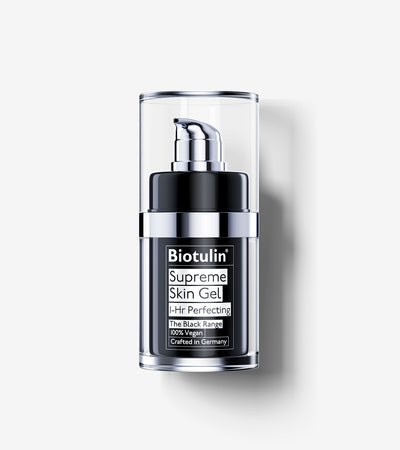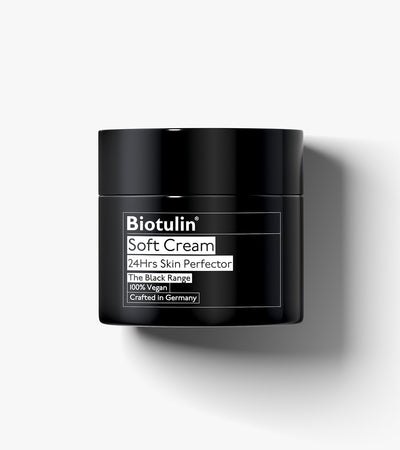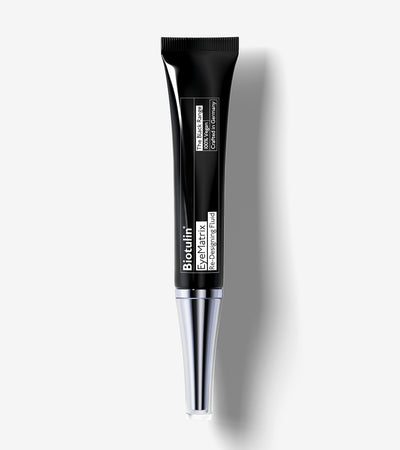Overview/Definition
Benzoic acid is a white, crystalline solid that naturally occurs in plants such as berries, cinnamon, and cloves. It has been widely used for centuries, primarily for its antimicrobial and preservative properties. In skincare, benzoic acid is valued for its ability to protect formulations from microbial contamination, ensuring the safety and longevity of the product. It is also used in the food industry as a preservative, commonly known by its E-number, E210.
Benzoic acid is often synthesized for industrial purposes, though its naturally occurring form is identical in function and effect. Its mild acidity helps balance product pH, making it suitable for skincare formulations.
Function in Skincare
Benzoic acid primarily acts as a preservative, preventing the growth of harmful bacteria, yeast, and fungi in cosmetics and skincare products. This helps maintain product safety and effectiveness over time.
It also has mild keratolytic properties, meaning it can help loosen and remove dead skin cells from the surface of the skin. This makes it a gentle, secondary exfoliant, often enhancing the effects of other active ingredients in a formulation.
Skin Type Suitability
Best For:
- Normal skin
- Oily or acne-prone skin (due to its antifungal properties)
- Combination skin
Caution for:
- Sensitive or rosacea-prone skin, as benzoic acid may cause mild irritation or redness in high concentrations.
Benefits of Benzoic Acid in Skincare
- Preservation: Extends product shelf life by inhibiting microbial growth.
- Gentle Exfoliation: Helps in the removal of dead skin cells, leaving skin smoother and more radiant.
- Antimicrobial Properties: Reduces the risk of skin infections caused by bacteria or fungi.
Potential Side Effects or Risks
While generally regarded as safe, benzoic acid can cause mild irritation, particularly on sensitive skin or in high concentrations. Side effects may include:
-
Redness or itching
-
A tingling sensation upon application
-
Rarely, contact dermatitis
To avoid these reactions, always perform a patch test before using products containing benzoic acid, especially if you have a history of skin sensitivity.
Usage in Skincare Products
Benzoic acid is commonly found in:
- Cleansers: To prevent bacterial contamination.
- Toners: Helps maintain product freshness.
- Serums: Acts as a secondary preservative to stabilize the formula.
- Moisturizers: Adds mild exfoliation benefits.
- Makeup: Ensures long-lasting safety and quality.
Scientific Studies/Research
Numerous studies support the safety and efficacy of benzoic acid in cosmetic applications. According to the Cosmetic Ingredient Review (CIR) Expert Panel, benzoic acid is safe for use in concentrations up to 2.5% in leave-on products and higher in rinse-off formulations. Its effectiveness as a preservative has been well-documented, with evidence showing its ability to inhibit a wide range of microorganisms.
Other Names/Synonyms
- Benzene carboxylic acid
- Phenylcarboxylic acid
- E210 (as a food preservative)
Sustainability/Environmental Impact
Benzoic acid is considered environmentally safe when used in cosmetics at typical concentrations. It is biodegradable and poses minimal risk to aquatic life. Sustainable sourcing practices are being increasingly adopted for its natural form, especially in high-quality formulations.
Fun Facts
- Benzoic acid was first discovered in the 16th century by sublimation from gum benzoin, a resin derived from the Styrax tree.
- It has been used historically as a component in incense and perfumes due to its aromatic properties.
- Apart from skincare and cosmetics, benzoic acid is used in pharmaceuticals to treat fungal infections.
Sources/References





